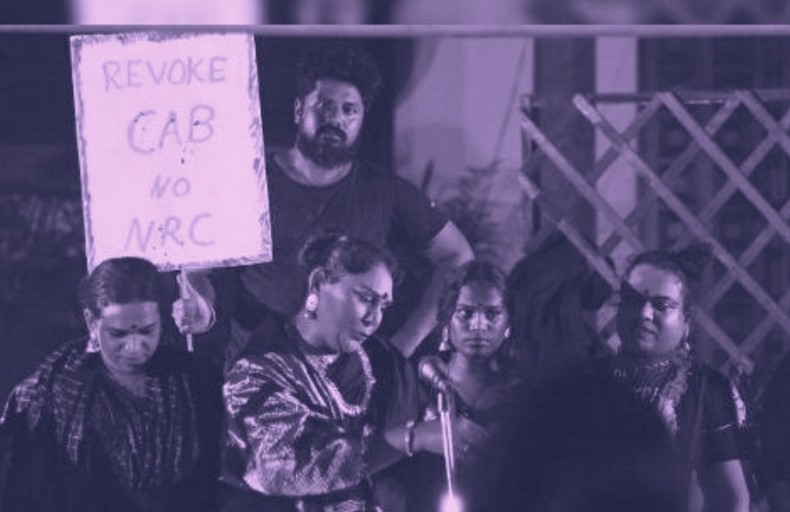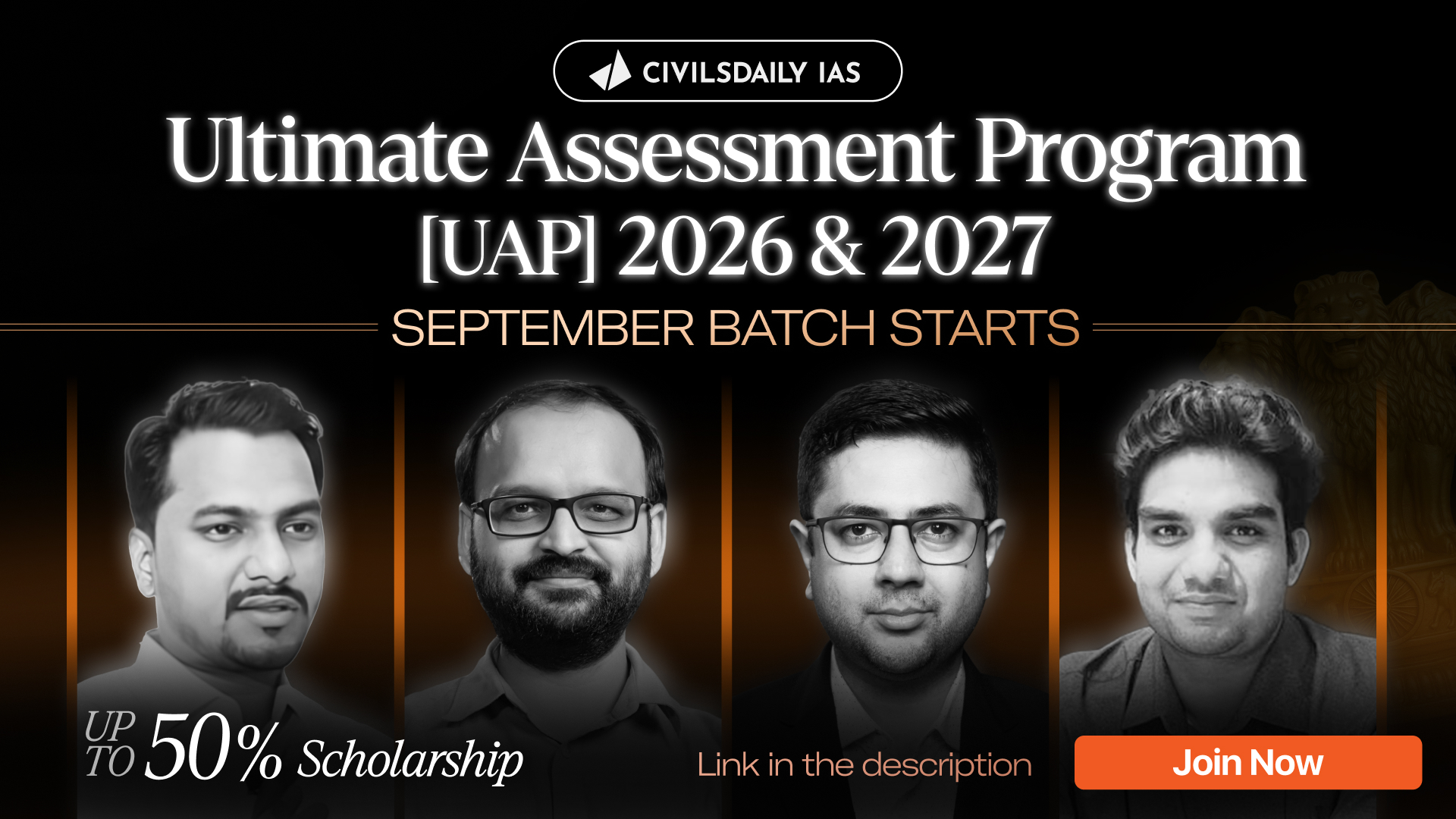N4S: “When identity becomes a burden, not a right.” That’s the core message of this article. UPSC often frames questions on such topics through the lens of Fundamental Rights, constitutional morality, or state vs individual debates. For instance, the 2015 question on the right to a clean environment during Diwali used Article 21 to anchor a contemporary issue. Similarly, detention and citizenship in Assam can be asked through Article 21 (life and liberty), Article 22 (procedural safeguards), or Article 14 (equality). Many aspirants falter because they either stick to legal jargon without connecting to ground realities, or they narrate facts without showing how it affects real lives or violates constitutional values. This article helps bridge that gap. It does not just list laws and events but humanises them. When it says detention “detains rights” (see ‘Impact on Detainees’ section), it moves from abstract policy to lived experience. The example of a woman being excluded due to spelling errors (“Rahima Khatun” vs “Rahima Khatoon”) underlines how a minor glitch can alter one’s life — making your answer come alive. A very special feature of this article is how it connects macro-constitutional ideals with micro-level injustices (like in the section ‘Marginalisation of Vulnerable Groups’ and ‘Loss of Records due to Floods’).
PYQ ANCHORING
GS 2: Does the right to clean environment entail legal regulations on burning crackers during Diwali? Discuss in the light of Article 21 of the Indian Constitution and Judgement(s) of the Apex Court in this regard. [2015]
MICROTHEMES: Fundamental Rights
Assam’s immigration detention system, initially designed to manage undocumented migration, has become a symbol of bureaucratic overreach and human suffering. Far from being just an administrative process, it has trapped thousands—many of them poor, marginalised, and paperless—in a cycle of fear, uncertainty, and indefinite confinement. At its core, this regime doesn’t just detain people—it detains rights, raising urgent alarms about India’s constitutional promises of liberty, dignity, and fair procedure.
How can a democracy justify indefinite detention without trial? What happens when proof of identity becomes a privilege? And can a nation uphold its Constitution while turning detention into default?
‘Proof of Identity’ : India & Assam
In India, the proof of identity system is largely document-based and applies to citizens for various purposes — accessing government schemes, voting, banking, travel, etc. There is no single universal ID that conclusively establishes citizenship; instead, a mix of documents are used to prove identity, address, and date of birth.
Common Identity Documents in India:
- Aadhaar Card – Biometrics-based ID issued by UIDAI; proves identity and address, not citizenship.
- Voter ID (EPIC) – Issued by the Election Commission; used to prove Indian citizenship for electoral purposes.
- Passport – Issued by the Ministry of External Affairs; considered proof of citizenship.
- PAN Card – Primarily for income tax; proves identity, not citizenship.
- Birth Certificate, School Certificates, and Government Service Records – Used to prove date/place of birth and lineage.
- Ration Card, Driving Licence, etc. – Often used for address and family-based identification.
Most of these documents are accepted in a presumptive and inclusive way, meaning people are generally presumed to be citizens unless proven otherwise.
How is Assam Different?
Assam operates under a distinct and exclusionary framework due to its unique history of migration and the NRC (National Register of Citizens) process. Here, the burden of proving citizenship is far higher, more complex, and often punitive in nature.
Key Differences in Assam:
- Legacy Data Requirement: Individuals must prove that they or their ancestors were in Assam before March 24, 1971 (as per the Assam Accord). Requires linking one’s name to pre-1971 documents (like 1951 NRC or 1971 electoral rolls), a huge burden in a state prone to floods and displacement.
- Family Tree Verification: People must prove lineage through official documents — often not available for women, orphans, or displaced persons. Minor spelling errors (e.g., “Rahima Khatun” vs. “Rahima Khatoon”) can lead to exclusion.
- Foreigners Tribunals (FTs): Individuals suspected of being illegal immigrants may be summoned by FTs to prove citizenship. Even if one has Aadhaar or Voter ID, it may not be accepted as conclusive proof.
- Presumption of Illegality: Unlike the rest of India, in Assam, individuals are presumed to be foreigners until proven otherwise, reversing the usual principle of natural justice.
- Detention and Exclusion: Failure to prove identity/citizenship can lead to detention in designated centres and loss of legal rights.
While most Indians rely on flexible, inclusive identity documentation for everyday life, Assam applies a rigid, high-stakes system focused on citizenship verification, rooted in historical anxieties over migration. This makes identity not a tool for inclusion, but a test of belonging — often with life-altering consequences.
Issues in NRC Process
The NRC (National Register of Citizens) process in Assam, intended to identify illegal migrants, has been mired in controversy due to deep procedural and structural flaws. While the goal was to create a fair and accurate record of legal residents, the implementation raised serious humanitarian and constitutional concerns. The process disproportionately affected the poor, rural, and marginalized communities—often not because they were illegal immigrants, but because they lacked paperwork, faced systemic disadvantages, or encountered bureaucratic opacity. The table below highlights key issues that plagued the NRC process, undermining both its credibility and fairness.
| Factor | Explanation | Example |
| Stringent Documentation Requirements | Proof of ancestry before March 24, 1971 required. | Rural residents lacked land/birth records due to illiteracy or displacement. |
| Loss of Records | Floods and natural disasters destroyed old documents. | Many families in flood-prone Assam lost records multiple times. |
| Minor Discrepancies | Differences in names/spelling across documents led to exclusion. | “Rafiqul” vs “Rafiqul Islam” flagged as suspicious. |
| Marginalisation of Vulnerable Groups | Affected women, Bengali Muslims, and tribal groups disproportionately. | Women lacked independent lineage proof due to patriarchal norms. |
| Opaque and Unfair Tribunal Procedures | No transparency or meaningful opportunity to appeal decisions. | People declared foreigners without notice or hearing. |
Impact on Detainees
| Threat to Liberty & Well-being | Constitutional Principles Affected | Examples |
| 1. Indefinite detention without trial | Article 21 – Right to Life and Personal Liberty | Many declared foreigners have been held in detention for years without deportation or conviction. |
| 2. Detention of Indian citizens due to document issues | Article 14 – Right to Equality before Law | Poor, illiterate individuals lacking documents are more likely to be wrongfully detained. |
| 3. Poor living conditions in detention centres | Article 21 – Dignity as part of Right to Life | Reports reveal lack of medical care, overcrowding, and denial of basic needs in detention facilities. |
| 4. No legal aid or fair representation | Article 22 – Protection against arbitrary arrest and detention | Many accused of being foreigners are tried in quasi-judicial Foreigners Tribunals without proper legal help. |
| 5. Disproportionate impact on marginalized groups | Article 15 – Non-discrimination on grounds of religion, caste, etc. | Bengali Hindus and Muslims are most affected, raising concerns of discriminatory implementation. |
| 6. Uncertainty, fear and mental health trauma | Directive Principles – Human dignity and social justice (Article 39A) | Even children of detainees suffer from trauma, education loss, and social stigma. |
Constitutional Violations Under Article 21 and 22
| Provision | Violation | Example |
| Article 21: Right to Life and Personal Liberty | Detention without fair legal basis undermines personal liberty. | Innocent individuals held for years without real deportation prospects. |
| Article 22: Procedural Safeguards | Lack of information on grounds of detention; no legal aid. | Detainees often unaware of reasons or denied timely counsel. |
| Detention Without Trial or Conviction | Law allows detention mainly through judicial process, not executive action. | People detained by quasi-judicial tribunals despite no criminal charge. |
| No Legitimate Preventive Purpose | Preventive detention requires imminent threat, not document issues. | Detentions continue even when deportation is not feasible. |
| Executive Overreach | Detentions ordered by executive/tribunals without judicial oversight. | Judiciary bypassed, undermining rule of law and access to remedy. |
Way Forward for Reforming India’s Detention Regime
India’s detention regime urgently requires a rights-based, rule-of-law-oriented overhaul. The following steps offer a tight and actionable path forward:
- Enact a Comprehensive Law: India needs a dedicated and codified immigration and detention law that clearly defines grounds for detention, outlines procedures, provides safeguards, and distinguishes between illegal immigrants, stateless persons, and asylum seekers.
- Reform Foreigners Tribunals: Make Foreigners Tribunals more transparent and accountable by ensuring judicial oversight, standardized procedures, and access to free legal aid. Appeals must be allowed before a competent and impartial authority.
- Cap Detention Periods: Introduce a legally mandated, time-bound limit on administrative detention — for example, six months — beyond which individuals must be released if deportation is not feasible.
- Develop Alternatives to Detention: Shift towards community-based monitoring, reporting obligations, or bail systems for those not posing security risks, especially families, the elderly, and children.
- Ensure Humane Conditions: Detention centres must comply with basic human rights standards, including access to healthcare, clean living spaces, and education for children. Independent bodies should regularly audit these facilities.
- Address Statelessness and Identity Gaps: Formulate a clear national protocol for dealing with stateless persons and those excluded from citizenship due to documentation gaps, in line with international principles.
- Protect the Vulnerable: Women, children, and marginalised communities require special procedural protections during verification and detention processes to avoid systemic injustice.
- Establish Parliamentary Oversight: Institutionalise regular reporting to Parliament or a standing committee on the number of detainees, conditions in centres, and legal outcomes to ensure transparency and accountability.
Only by combining legal clarity, administrative fairness, and humane treatment can India reconcile its immigration control with constitutional values and international obligations.
#BACK2BASICS: Detention Regime in India
India’s detention regime refers to the legal and administrative framework under which individuals are detained — either as foreigners or under preventive detention laws — without regular criminal trial. It is especially relevant in the context of immigration enforcement and national security.
1. Detention under Foreigners Act, 1946
- Who can be detained?
Foreigners who are:- Overstaying visas
- Entering illegally
- Declared as “foreigners” by a Foreigners Tribunal (particularly in Assam)
- Legal Basis:
The Foreigners Act, 1946 empowers the government to detain and deport any foreign national without a criminal conviction. - Purpose:
Detention is considered administrative, not punitive — aimed at deportation.
2. Detention in the Context of NRC (National Register of Citizens) in Assam
- Special Case:
People excluded from the NRC and declared as “foreigners” by Foreigners Tribunals may be detained. - Problem:
Many of those detained:- Were Indian citizens wrongfully excluded
- Had no country to be deported to (e.g., stateless)
- Detention Centres:
Special prisons within jails, and standalone facilities, such as the large centre in Goalpara (Assam).
3. Preventive Detention under Indian Constitution
- Constitutional Provision:
Article 22(3)–(7) allows preventive detention in the interest of:- National security
- Public order
- Foreign affairs
- Maintenance of essential supplies
- Laws Allowing Preventive Detention:
- NSA (National Security Act), 1980
- COFEPOSA (for economic offences)
- J&K PSA (Public Safety Act)
- Safeguards:
- Detention beyond 3 months requires advisory board approval.
- Detainee may not be told full grounds of arrest if it’s against public interest.
4. Detention of Refugees and Asylum Seekers
- India is not a signatory to the 1951 UN Refugee Convention.
- Refugees like Rohingyas and undocumented migrants may be detained as illegal foreigners.
- Detention is not governed by a uniform refugee law — policies vary by government orders.
5. Key Concerns with India’s Detention Regime
| Issue | Explanation |
|---|---|
| Lack of Legal Aid | Many detainees cannot access lawyers or understand the legal process. |
| Indefinite Detention | Without bilateral agreements, deportation is impossible — leading to endless jailing. |
| Poor Detention Conditions | Overcrowding, lack of medical care, and absence of facilities for women/children. |
| Statelessness Risk | Many excluded individuals have no citizenship anywhere. |
| Arbitrary and Disproportionate | Minor documentary issues lead to grave consequences, violating natural justice. |
India’s detention regime, particularly in Assam, raises serious human rights, constitutional, and due process concerns. While the state has a right to control illegal immigration and ensure national security, the current system lacks transparency, uniform safeguards, and accountability, making it vulnerable to misuse and injustice — especially for the poor and marginalised.
Chronology of NRC (National Register of Citizens) in Assam
| Year/Period | Event/Development |
| 1951 – The First NRC | After India’s first Census, the NRC was created in Assam to record who was living there legally. It wasn’t updated thereafter — it stayed frozen in time. |
| 1971 – Bangladesh Liberation War | War in East Pakistan (now Bangladesh) led to a massive refugee influx into Assam. This caused tensions over identity, jobs, and land among locals. |
| 1979–1985 – Assam Agitation | A mass movement led by student bodies like AASU demanded the identification and deportation of “illegal foreigners” (mainly from Bangladesh). |
| 1985 – Assam Accord Signed | The Centre and protest leaders signed the Assam Accord. It set March 24, 1971, as the cut-off date for identifying foreigners and promised an NRC update. |
| 2005–2013 – NRC Update Gains Steam | NRC update efforts revived under Congress and BJP. Pilot projects began but stopped due to violence. In 2013, the Supreme Court took charge of the process. |
| 2015 – NRC Update Process Officially Begins | People in Assam had to prove that they or their ancestors were in India before March 24, 1971, using documents like land records and voter lists. |
| 2018 – Draft NRC Released | The first draft excluded over 40 lakh people, leading to panic, confusion, and widespread controversy. |
| 2019 – Final NRC Published | On August 31, 2019, the final NRC was released, excluding 19.06 lakh people. Appeals were to be made in Foreigners Tribunals. Many were dissatisfied with the list. |
| Post-2019 – What Now? | The NRC hasn’t been officially notified. The Assam government rejected it, and it may be rechecked or redone. Excluded individuals face legal uncertainty and fear. |
SMASH MAINS MOCK DROP
In the context of the NRC process in Assam, examine how document-based identity verification challenges the constitutional promises of liberty, equality, and due process. Suggest a rights-based framework to reconcile immigration control with fundamental rights.”


